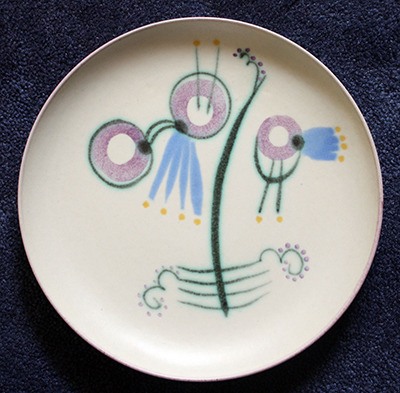Russel Barsh brings the struggle between modern artists and the Third Reich to Lopez Library with a exhibit of representative works of German ceramicists who were sacked, expelled, imprisoned, or proscribed in the 1930s. After an opening reception on Friday, Feb. 14, the pieces will be on display to March 31.
Artists included in the exhibit include Martha Katzer, Marguerete Heymann, Augusta Gustl Kaiser, Eva Striker Zeisel, and Kurt Wendler. Heymann was forced to sell her studio and emigrate because she was Jewish. Zeisel, Jewish and communist, fled to avoid concentration camps. Katzer was protected by co-workers but died awaiting deportation. Wendler was imprisoned for hiding a Jewish painter. Gustl Kaiser died in poverty, unable to find work because of her openly lesbian relationship with artistic collaborator Hedwig Marquardt.
These artists’ works are not only beautiful but also surprisingly “modern,” Barsh says. They anticipate techniques and styles that were widely copied in the 1950s-1960s in the countries to which Zeisel and Heymann fled the United States and United Kingdom. “Idealistic German artists, predominantly young women, many of them Jewish, created the look of everyday objects that most of us grew up with,” Barsh says.
German decorative arts in the Weimar period (1919-1933) attracted large numbers of women, who were still excluded from participating professionally in the fine arts and who adopted utilitarian philosophies that created collaborative bridges with Soviet artists, Barsh explains.
“This demographic and political movement brought fresh energy and ideas to German art,” Barsh says, “but it identified new art styles with the enemies of Germany’s most angry and disillusioned nationalists.”
Hitler had been a failure as a painter, which he blamed on Jewish academics and new arts movements. When he came to power in 1933, state control of the arts became a mainstay of Nazi policy. Jews were forced out of teaching positions, the Bauhaus art school was closed, studios owned by Jews were confiscated, and the works of some artists smashed as Entartete Kunst (“Degenerate Art”).
Better known on Lopez as an ecologist and science educator, Barsh had formal training in industrial ceramics in high school, and began collecting historically interesting ceramics as a university student.




